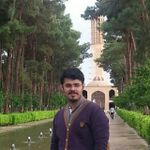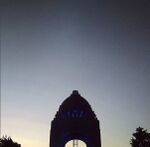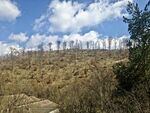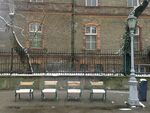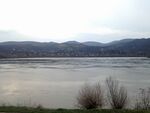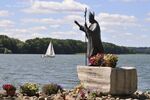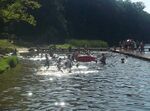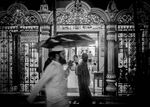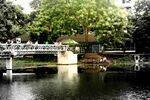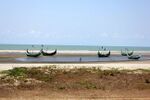LED Online Seminar 2018 - Working Group 9
--> Back to working group overview
Dear working group members. This is your group page and you will be completing the template gradually as we move through the seminar. Good luck and enjoy your collaboration!
Assignment 1 - Reading and Synthesizing Core Terminology
- You can read more details about this assignment here
- Readings are accessible via the resources page
Step 1: Your Landscape Democracy Manifestoes
Step 2: Define your readings
- Please add your readings selection for the terminology exercise before April 18:
A: Landscape and Democracy
The European Landscape Convention (Florence, 2000)
Burckhardt, Lucius (1979): Why is landscape beautiful? in: Fezer/Schmitz (Eds.) Rethinking Man-made Environments (2012)
B: Concepts of Participation
Burckhardt, Lucius (1974): Who plans the planning? in: Fezer/Schmitz (Eds.) Rethinking Man-made Environments (2012)
David, Harvey (2003): The Right to the City, International Journal of Urban and Regional Research, Volume 27, Issue 4, pages 939–941
Olwig, Kenneth R. (1996): "Recovering the Substantive Nature of Landscape
Sanoff, Henry (2014): Multiple Views of Participatory Design, Focus
Hester, Randolph (1999): A Refrain with a View, UC Berkeley
Hester, Randolph (2012): Evaluating Community Design, Landscape Journal
Hester, Randolph (2006): Design for Ecological Democracy - Sacredness, The MIT Press
C: Community and Identity
Nassauer, Joan Iverson (1995): Culture and Changing Landscape Structure, Landscape Ecology, vol. 10 no. 4.
Hester, Randolph (2006): Design for Ecological Democracy, The MIT Press
D: Designing
Wates, Nick: The Community Planning Handbook: How people can shape their cities, towns & villages in any part of the world (2nd ed 2014, Routledge)
Massachusetts Institute of Technology (2013): Places in the Making: How Placemaking Builds Places and Communities
Hester, Randolph: Life, Liberty and the Pursuit of Sustainable Happiness
Pritzker Prize-winning architect Alejandro Aravena on sustainable design and community involvement in Chile
E: Communicating a Vision
Steps 3 and 4: Concepts Selection and definition
- Each group member selects three relevant concepts derived from his/her readings and synthesize them/publish them on the wiki by May 9, 2018
- Group members reflect within their groups and define their chosen concepts into a shared definition to be posted on the wiki by June 6, 2018.
- Other group members will be able to comment on the definitions until June 12, 2018
- Each group will also report on their process to come to a set of shared definitions of key landscape democracy concepts on the wiki documentation until June 20, 2018
Concepts and definitions
Author 1: ...
- ......
- .......
- .......
Author 2: ...
- ......
- .......
- .......
Author 3: ...
- ......
- .......
- .......
Author 4: ...
- ......
- .......
- .......
Author 5: ...
- ......
- .......
- .......
Step 5: Reflection
Step 6: Revised manifestoes
- please look again at your initial manifestoes and update them with any new aspects/prespectives you have taken up during this seminar
Assignment 2 - Your Landscape Symbols
- You can read more details about this assignment here
This is a new picture (one week ago) from "Mellat Park", where is the main and the biggest green space in Mashhad,my hometown, as a second metropolitan in IRAN. [ Mellat means people in English language]. This public place locate in the center of Mashhad and provide a suitable arena for people to walk, play,recreate and interact and is a pure landscape symbol in Mashhad.
This a Eram Palace in Shiraz with its valuable history, where is famous because of its well-known poet in the world. Shiraz was a capital of ancient Iran and there was a palace of that dynasty. The garden around the building is a memorable public park in the scale of the country and its note standing Cedar, which is pictured here, became a famous tree as a” Naz Cedar”. today, Eram Garden and building are within Shiraz Botanical Garden (established 1983) of Shiraz University. They are open to the public as a historic landscape garden. They are World Heritage Site, and protected by Iran's Cultural Heritage Organization.
Dowlatabad Garden located in Yazd, central Iran, is a Persian architecture jewels.The Garden is an authentic Iranian garden that annually attracts thousands of domestic and foreign tourists.This traditional air-conditioning system of local houses around the desert in Iran is the essential elements at the residential structures. However, the exaggerated grand size of this wind catcher functioDowlatabad is among the Persian gardens that have just been registered on UNESCO's World Heritage List as one of the masterpieces of traditional gardens.ned perfectly well. The Persian garden was registered on UNESCO’s World Heritage List on Monday (June 26th).The decision to register the property on the list was made during the 35th session of the World Heritage Committee, which opened in Paris on June 19.
Landscape Symbols Mariana Martinez Cairo: ...
"The Square of the 3 Cultures" is a space in Mexico City with an important cultural, historical, political and architectural value. The name "3 Cultures" is in recognition of the 3 periods of Mexican history reflected by buildings in the plaza: aztec ruins (ca.1400), Spanish colonial(1600), and a massive housing complex (1964). In addition to this...the open space and surroundings of this square are a memorial to the students and civilians killed in this square by military and police in the so called "Tlatelolco Massacre"(1968) after their demonstration against the oppressive government.
Monumento a la Revolución (Monument to the Revolution)Republic Square, Mexico City. Landmark, reference, gathering point, element of historical celebration, symbolic triumphal arch, public space, architectural element. The Monument to the Mexican Revolution is all of them. It's symbolism lies in it's historical and spatial importance to the mexican people.
Zócalo de la Ciudad de México (Mexico City Main Square) GeoLocation: Downtown, Mexico City The most important open public space in Mexico City. People identify it as an element of cultural heritage, reunion, the iconic point to express themselves, celebrate, grieve and share as a community. In the political, cultural and social atmosphere it is used for all the purposes taht involve the mexican people.
Landscape Symbols Auther 3: V. D.
Sky and earth. The village of Kospallag is located in the north of Hungary in the Pest county. This image represents a view from a window to a hill. Hills are stong landscape symbols that are taken as an icon of regional identity. Also, it provides a certain view of the surrounding, the hill itself is an element of the landscape and a part of a culture. Michel Corrajoud who was a famous French Landscape Architect said landscape "The landscape is where the sky and the earth touch each other"
Riverscape. Facing Visegrad, we can distinguish easily one of the landscape symbols that shaped the Carpathian basin landscape, the Danube. Its water reflects the landscape, from the countryside to the inner city. Water is a landscape symbol which can be found in many aspects of the Hungarian culture and history: baths, river transport, riverbanks and sports practice.
Landscape Symbols Author 4: Magdalena Giefert
This is a monument of John Paul II (Poland, city of Olsztyn). From the historical and socio-political point of view, he played a great role in Poland. Above many other issues, he supported the transformation of Poland to become a democratic country. The regard and affection in which the people of Poland held and continue to hold John Paul II is extraordinary (in 1979 during his first visit as a pope, 13 million of Poles saw him in person). Before he died in 2005, there were 230 statues of him in Poland and after his dead this amount lifted to ca. 550 (there are about 200 monuments in other parts of the world overall). Monuments are well recognized and understandable, located in central parts of parks, squars, public areas. Are used by the public mainly as gather points to worship and memorialize. Picture taken in 1995, Olsztyn, Poland.
Today nearly 12 million people in Poland live in prefabricated buildings. This panel system entered the our market in the late 80’s and had a major influence on the landscape in every town. There are thousands of settelments which were built with this technology and embrace 3 generations of residents. It is a part of our history, symbol of economic and menthal change of our society. The strucure of settelments is usually the same, including green infrustruction and leisure parts, like if the planners used "copy-paste" tool. Photo taken in Szczecin, 2005, Pomorzany Estate.
Local symbol. I would call it "Our Lake". Lake Sarcz in my Town of Birth, Trzcianka, Poland. Meeting - and leisure area for many generations. It's still a primary location for many individual and social activites. Still pure on one side but regulary visited. Beloved, important, accesible, used and shared by people. Considered as an important part of local landscape, which makes it complete. Photo taken in 2002.
Landscape Symbols Author 5: Tanjila Tahsin
"Shakhari Bazaar" shares a long history more than 400 years with Dhaka city itself. It is one of the oldest localities of Dhaka city, located near the inter-section of Islampur road and Nawabpur Road - the two main arteries of the old city. For centuries Dhaka has been famous for its traditional arts and crafts. The name implies that the area began as a settlement of "Shakharis" or a community of craftsmen specialized in making conch shell ornaments.The buildings of Shakhari Bazaar trace the history and evolution of building crafts, construction and materials of Dhaka for the past few hundread years. Lack of maintenance and repair has resulted in a worn out appearance. Shakhari Bazaar lined with thin slices of richly decorated brick buildings, built during the late Mughal or Colonial period.
“Dhanmondi Lake” is a lake located in the Dhanmondi residential area in the center of the Dhaka city. The lake was originally a dead channel of the Karwan Bazar River, and was connected to the Turag River. In 1956, Dhanmondi was developed as a residential area. In the development plan, about 16% of the total area of Dhanmondi was designated for the lake. Dhanmondi Lake development was an attempt to embody an urban oasis to provide relief in the concrete cityscape. The concept was to invite people to protect the lake from encroachment creating a buffer zone in between the allotted residential plots and the lake. Now, Dhanmondi Lake has become a well visited tourist spot, with cultural hubs such as the Rabindra-Sarobar located along its side.
Cox's Bazar Beach, located at Cox's Bazar, Bangladesh, is the longest unbroken sea beach in the world. Cox's Bazar is the prime beach and tourist town in Bangladesh, situated alongside the beach of the Bay of Bengal, beside the Indian Ocean, having unbroken 120 Kilometer golden sand beach. This town is situated in the Chittagong Division in south-eastern Bangladesh. Cox's Bazar is a city, fishing port, tourism centre and district headquarters in Bangladesh. This is the most visited place in Bangladesh, with its beautiful refreshing green hills, traditional boats and the wonderful sea beach. Over many years Cox's Bazar has been an attraction to both international and domestic tourists. Opportunities of bathing and swimming in shark free warm water makes Cox’s Bazar a top tourist attraction.
Assignment 3 - Role Play on Landscape Democracy "movers and shakers"
- You can read more details about this assignment here
Assignment 4 - Your Landscape Democracy Challenge
- You can read more details about this assignment here
- Each group member will specify a landscape democracy challenge in his/her environment
Landscape Democracy Challenge 1
- Give a title to your challenge
- Yourname challenge 1.jpg
caption: why did you select this case?
- Yourname challenge 2.jpg
caption: what is the issue/conflict (1)
- Yourname challenge 3.jpg
caption: what is the issue/conflict (2)
- Yourname challenge 4.jpg
caption: who are the actors?
Your references:
- ...
- ...
Landscape Democracy Challenge 2
- Give a title to your challenge
- Yourname challenge 1.jpg
caption: why did you select this case?
- Yourname challenge 2.jpg
caption: what is the issue/conflict (1)
- Yourname challenge 3.jpg
caption: what is the issue/conflict (2)
- Yourname challenge 4.jpg
caption: who are the actors?
Your references:
- ...
- ...
Landscape Democracy Challenge 3
- Give a title to your challenge
- Yourname challenge 1.jpg
caption: why did you select this case?
- Yourname challenge 2.jpg
caption: what is the issue/conflict (1)
- Yourname challenge 3.jpg
caption: what is the issue/conflict (2)
- Yourname challenge 4.jpg
caption: who are the actors?
Your references:
- ...
- ...
Landscape Democracy Challenge 4
- Give a title to your challenge
- Yourname challenge 1.jpg
caption: why did you select this case?
- Yourname challenge 2.jpg
caption: what is the issue/conflict (1)
- Yourname challenge 3.jpg
caption: what is the issue/conflict (2)
- Yourname challenge 4.jpg
caption: who are the actors?
Your references:
- ...
- ...
Landscape Democracy Challenge 5
- Give a title to your challenge
- Yourname challenge 1.jpg
caption: why did you select this case?
- Yourname challenge 2.jpg
caption: what is the issue/conflict (1)
- Yourname challenge 3.jpg
caption: what is the issue/conflict (2)
- Yourname challenge 4.jpg
caption: who are the actors?
Your references:
- ...
- ...
Assignment 5 - Your Democratic Change Process
- You can read more details about this assignment here
- After documenting and reflecting on your challenges you will continue jointly with one of these challenges and design a democratic change process
Your Democratic Change Process
- Add Title
- Your Democratic Change Process Slide1.jpg
caption: ...
- Your Democratic Change Process Slide2.jpg
caption: ...
- Your Democratic Change Process Slide3.jpg
caption: ...
- Your Democratic Change Process Slide4.jpg
caption: ...
Reflection
- ....
- ....
- ....
Conclusion:
- ....
- ....
- ....
Your references
- ...
- ...
- ...
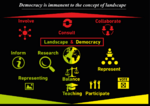
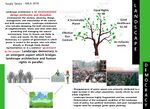
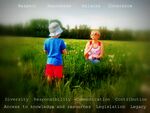

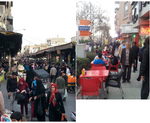
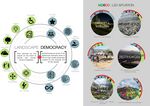

![This is a new picture (one week ago) from "Mellat Park", where is the main and the biggest green space in Mashhad,my hometown, as a second metropolitan in IRAN. [ Mellat means people in English language]. This public place locate in the center of Mashhad and provide a suitable arena for people to walk, play,recreate and interact and is a pure landscape symbol in Mashhad.](/images/thumb/8/8c/LED_Landscape_Symbol-navid_Asadi_-.jpeg/112px-LED_Landscape_Symbol-navid_Asadi_-.jpeg)

